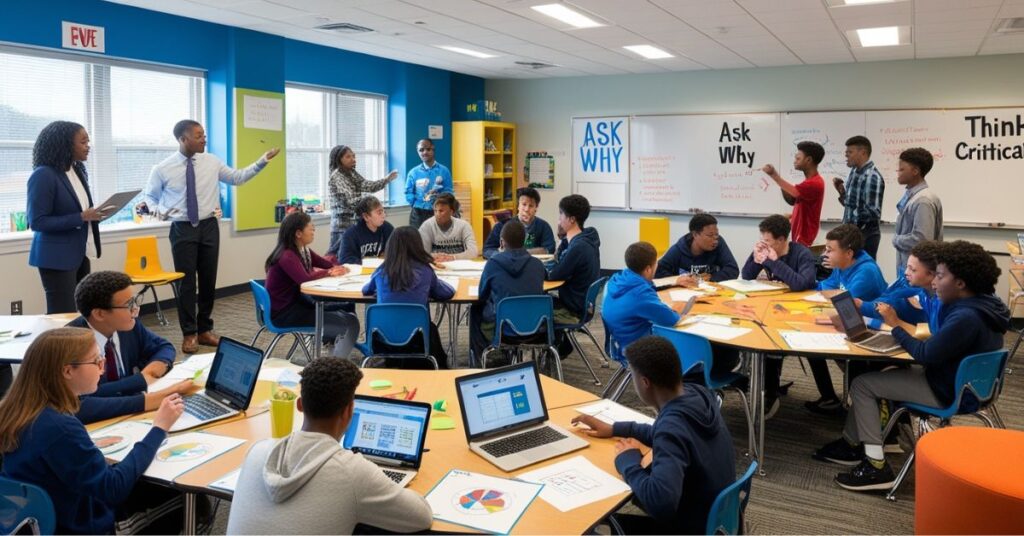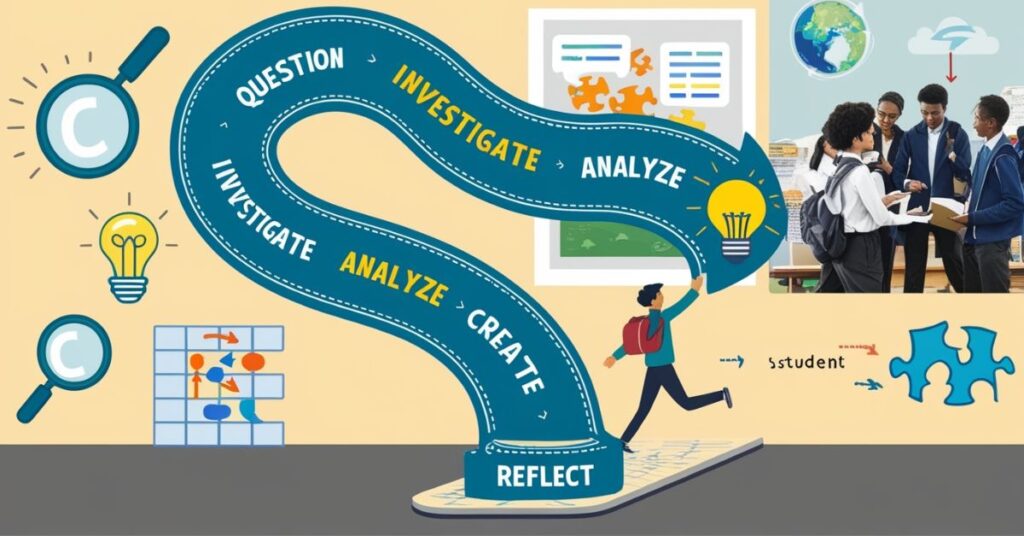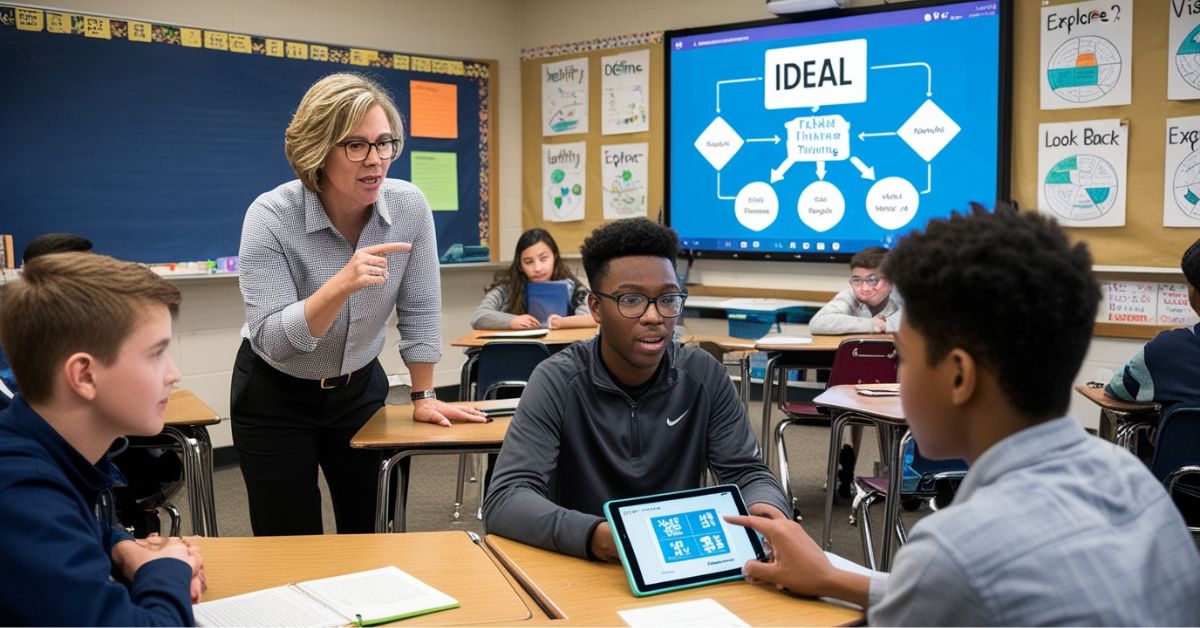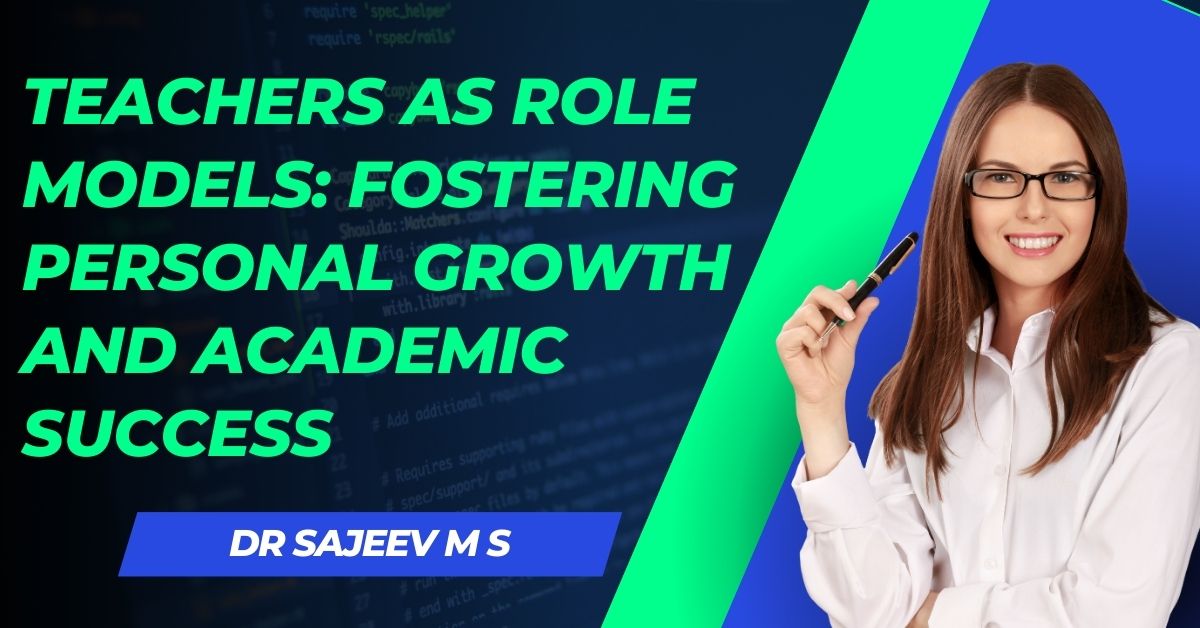In today’s ever-faster-moving world in which information is plentiful and challenges are complex, critical thinking and problem-solving skills have gone from being optional to essential. While educators have traditionally been thought of as “knowledge transmitters,” they have transitioned into being facilitators to guide students toward becoming critical thinkers, innovative problem-solvers, and adaptable, lifelong learners.
This article examines practical, effective ways to embed critical thinking and problem-solving into everyday classroom teaching so that students are equipped to handle the challenges of today, not just the test content.
What Are Critical Thinking and Problem-Solving Skills?
Although closely connected, critical thinking and problem-solving are two separate and connected cognitive skills:
- Critical thinking is an objective way to assess evidence, find assumptions and bias, and then draw reasoned conclusions and connections. Critical thinking is not the retrieval of information; it is thinking about information, asking questions about it, and finally drawing conclusions about it.
- Problem-solving is the process of identifying a problem, identifying possible solutions, carrying out an action plan, and then reflecting on what happened. Problem-solving requires creativity, logical reasoning, and perseverance, and it also usually relies on strong critical-thinking skills.
When combined, these two types of thinking are the foundations of 21st-century learning. Teaching these skills to our students prepares them to create strategies for dealing with the complexities of the real world with confidence and clarity.

How to Develop Critical Thinking and Problem-Solving Skills in the Classroom
1. Foster a Culture of Curiosity and Inquiry
Creating a learning climate that fosters questioning and exploration will be an important component of future students’ critical thinking.
- Encourage Student-Initiated Questions—Allow students to ask and investigate their questions. Value their “off-topic” questions too, as some may lead to important learning.
- Use Open-Ended Tasks—Replace worksheets with a task allowing multiple perspectives and creative responses.
- Normalise Mistakes as Learning Opportunities—Shift focus from the “right answer” to how students are learning. Bring awareness to the students, allowing time for reflection, revision, and growth.
2. Utilise Inquiry-Based and Project-Based Learning
Inquiry-based learning and project-based learning are two proven pedagogical approaches that enhance critical thinking.
- Inquiry-Based Learning—Allow students to lead based on an inquiry topic of interest. Students become researchers, practitioners, and evaluators of evidence, and they gain exposure to analytical thinking and perseverance as they now take ownership of their learning.
- Project-Based Learning—Students will address challenges that are real-world and contemporary and, over time, engage with research to define a problem or question, collaborate with their peers, apply creative problem-solving, and share their solutions, all the while incorporating 21st-century skills.
3. Use High-Level Questioning Techniques
The types of questions we ask during class influence how students think.
- Go to Beyond Recall: ask “why,” “how,” and “what if” questions that promote analysis, evaluation, and synthesis questions;
- Use the Socratic Method: by asking questions and leading students through careful, probing questions, you can lead them to clarify and uncover their independent thought.
- Teach questioning: Teach students how to ask questions—something they will do a lifetime for learning lifelong skills.
4. Support Collaboration, Peer Learning
The process of working collaboratively really supports the development of problem-solving and reasoning skills.
- Structured Group Tasks: Have students work collaboratively on challenges where they analyse data and justify their thinking;
- Think, Pair, Share: Begin with lots of individual thinking time, followed by time for discussion with their partner, and then share with the class.
- Debates/Discussions: Structured debates help kids research both sides of an issue, think on their feet, and support their ideas with research-based reasoning, likely with some confidence.
5. Integrate Real-World Problems and Case Studies
Develop learning relevance through real-world connections and engage students in critical thinking.
- Case Study Identification: Students engage with real-world, authentic case studies using problems and evidence as a basis from which students are challenged to identify a dilemma, evaluate a range of possible solutions, and respond with several recommendations.
- Problem-based Learning (PBL): Design lessons around a real-world problem that students must work together as a group to address.
- Simulated Role Plays: Have students engage in real-life scenarios that require students to make decisions, adjust their thinking, and evaluate their outputs or outcomes.
6. Teach Thinking Explicitly
Teach deep thinking to help students learn how to think, rather than just what to think.
- Think Alouds: Describe your thinking process out loud as you model your own analysis or decision-making process.
- Graphic Organisers: Use visual and graphic tools like Venn diagrams, flowcharts, and concept maps to assist students with clarifying ideas.
- Problem-Solving Frameworks: Consider a step-by-step model like the IDEAL or Routines (identify, define, explore, act, look back).
- Reflective Journaling: Promote metacognition by having students reflect on what they learned or worked on, what they did not get done, and how they will improve.

How to Assess Critical Thinking and Problem-Solving Skills:
Standardised testing seldom captures the nuances and depth of a student’s thinking. Here are some strategies to assess real change:
- Performance Tasks: Engage students with projects, presentations, debates, and case studies that require application of thinking skills.
- Rubrics that state specific criteria: Clearly describe what success looks like in your criteria (analysis, logic, creativity, and evaluation).
- Self and Peer Assessment: Teaching students how to thoughtfully evaluate their own and others’ work will develop self-awareness and accountability.
Addressing Problems in Implementation
Teaching for critical thinking and problem-solving requires a shift in planning and mindset. Barriers teachers face with the implementation of critical thinking include the limitations of time constraints, pressure from the curriculum, and minimal professional development that supports problem-based learning. Some measures to assist in using these skills include
- Take Small Steps: Include critical thinking in an existing lesson before you need to redesign your complete curriculum.
- Access Professional Development: Invest in professional development dedicated to inquiry-based learning, teaching the skills of powerful questioning, and alternative assessments.
- Differentiate: Use the multiple approaches to teaching that are available in the education community to meet the diverse nature of our students’ learning needs, while ensuring your students have the opportunity to develop their skills in using these essential skills.
Conclusion: Preparing Students for the Future
Fostering critical thinking and problem-solving skills in education is not just a nice thing to do; it is essential. As educators, we can design our classrooms to be spaces for inquiry and challenge and encourage students to take responsibility for their learning.
When we weave and embed these skills into every day of our teaching, we distribute the responsibility for our learners’ thinking to the learners themselves so they are now beginning to think for themselves, collaborate with others, and solve problems in a way that is creative and meaningful. This is not about succeeding academically; it’s simply about preparing thoughtful citizens in an ever-changing world.
Let’s have fun creating a generation of thinkers and problem-solvers who will create a better world, starting with our classrooms today.
FAQs
1. What are critical thinking and problem-solving skills?
Critical thinking is the ability to objectively analyse information to make a reasoned judgment, while problem-solving is the ability to find a solution to a challenge and implement it.
2. Why are critical thinking and problem-solving skills important in education?
Critical thinking and problem-solving skills prepare students to confront and manage real challenges in their lives and develop independent thinking, enabling them to respond to a rapidly changing global world.
3. How can the teacher promote critical thinking in the classroom?
Teachers can support critical thinking through inquiry-based learning, open-ended questions, collaboration, and by utilising real-world problems.
4. What strategies can the teacher use to teach problem-solving skills?
Strategies include project-based learning, structured group work, role play in face-to-face scenarios, and explicit problem-solving approaches (IDEAL).
5. How can critical thinking and problem-solving skills be assessed?
Assessment methods include performance tasks, rubrics, self/peer assessment, logs or reflective journals, and case study analysis for real-world problems.
You may like to read:-
Critical Thinking Skills For Students: Importance and Practical Tips
- How to Dominate Your Online Business With 5 Proven Digital Marketing Strategies
- How to Cultivate Critical Thinking and Problem-Solving Skills in Classroom
- Top Proven Mental Health Strategies for Schools in 2025-26
- Time Management for Teachers: How to Plan, Prioritize, and Perform Better
- How Parental Involvement in Education Shapes a Child’s Growth and Success



